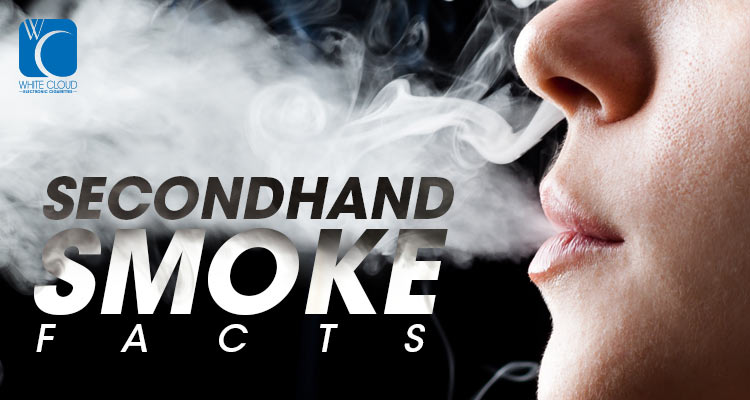While millions of Americans who smoke tobacco cigarettes make the conscious decision to put their own health at risk every day, the millions of others exposed to secondhand smoke do not make that choice, and yet are still put in harm’s way with every breath they inhale near an active smoker. In fact, 126 million men and women, all of whom do not smoke, are subjected to cigarette smoke on a regular basis either at home or at their place of work. Factor in the children and elderly family members of smokers and you have an almost inconceivable number of people exposed to poisons proven to cause debilitating disease and death.
Dangers of Smoking: The Most Serious Illnesses, Conditions & Diseases

Thanks in large part to widespread anti-smoking campaigns and awareness programs, we’re all relatively aware of the major health concerns from smoking cigarette tobacco: heart disease, COPD, various forms of cancer and emphysema all come to mind immediately. But what sorts of conditions can secondhand smoke exposure actually cause? Could they be all that serious? The answers may surprise you.
Recent surveys show that compounds and chemical additives found in secondhand smoke are responsible for almost 50,000 adult, nonsmoker deaths in the United States annually. In addition to this grievous loss of life, billions of dollars are spent each year treating and rehabilitating both children and adults whose exposure to secondhand smoke has led to severe medical issues, several of which are chronic and may last a lifetime.
Secondhand Smoke and Heart Disease

Research has shown that breathing in secondhand smoke can begin increasing cholesterol levels within a matter of ten minutes, causing nearly immediate damage to the lining that protects the arteries. A study of women exposed to secondhand cigarette smoke reported that the subjects who inhaled the smoke had a 69 percent higher risk of developing heart disease than women who hadn’t. A smaller, yet still significant, percentage of these women were statistically more likely to suffer a heart attack or stroke.
Every year, 46,000 nonsmokers die of heart disease and related complications because they live with someone who smokes cigarettes. Fortunately, when detected early, many cases of heart disease may be successfully treated with medication, lifestyle changes and surgery, as long as the patient is no longer exposed to cigarettes.
Related: Can Switching to Vaping Improve Cardiovascular Health in Smokers?
Secondhand Smoke and Lung Cancer
According to the National Cancer Institute, approximately 3,000 nonsmoking U.S. adults die from lung cancer annually because of exposure to secondhand cigarette smoke. This is one of the primary reasons that smoking has been banned in many public places, as more research has concluded that the air quality directly affects the health and general well being of other nonsmoking individuals.
The Surgeon General states that living with someone who smokes regularly may increase one’s risk of developing lung cancer by up to 30 percent, as well as other potentially fatal forms of the disease such as breast cancer, brain tumors and leukemia. Depending on the stage and severity of the cancer, treatment may include surgical removal of the cancerous tissue, radiation therapy, chemotherapy, medications or a combined treatment plan developed by a specialized team of physicians and oncologists.
Related: Can Vaping Reverse Lung Damage in Smokers?
Sudden Infant Death Syndrome (SIDS)
Possibly one of the most terrifying thoughts for any new parent involves the sudden, unexplained death of a new child. Sudden Infant Death Syndrome is as shocking as it is mysterious, affecting otherwise healthy children under the age of one year. The baby is simply put down for a quick nap or to bed for the night and, tragically, stops breathing in his or her sleep. While all of the definitive causes of SIDS are not yet known, exposure to secondhand smoke has been found to play a major role in a substantial number of cases.
Women who smoked during pregnancy or inhaled secondhand smoke while pregnant were more likely to have a baby who later died as a result of SIDS. When the bodies of infants who died from SIDS were tested, nicotine and cotinine concentrations in their lungs were notably higher than in babies who had died under different circumstances. Researchers believe secondhand smoke has an effect on the way the brain regulates breathing at this early stage of life.
How to Avoid the Dangers of Secondhand Smoke

When it comes down to it, there is absolutely no safe level of secondhand smoke. Even in the car with all of the windows down at 75 miles per hour, the passenger beside the smoking driver (or the child in the backseat) is still taking in a lot of smoke.
The best way to eliminate the risks associated with secondhand smoke exposure is to avoid cigarettes entirely; however, as smokers and former smokers all know, quitting smoking isn’t that simple and FDA-approved nicotine replacement therapies don’t always fit the bill either. This is where electronic cigarettes come into play: they offer smokers the same experience as smoking—with exceptions.
Ongoing scientific research on secondhand vapor continues to suggest it is far less harmful (if even harmful at all) than secondhand smoke. Unlike tobacco cigarettes, electronic cigarettes do not utilize fire or emit toxic smoke – only pure, flavored vapor. As a result, more and more smokers have been able to successfully avoid tobacco cigarettes with the help of vaping, as e-cigs allow them to continue enjoying the feel of smoking, but without the firsthand, secondhand, or even thirdhand side effects.
Related: E-Cig Vapor vs. Tobacco Smoke: Which is More Harmful?






